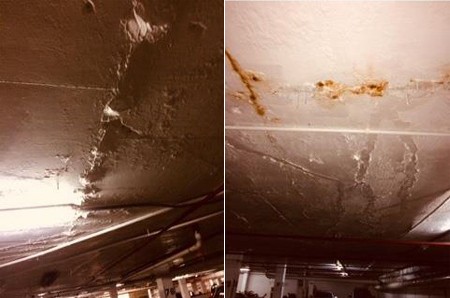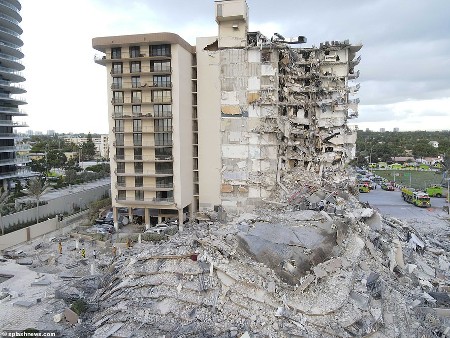Can climate change cause a building to collapse such as the one in Surfside, Florida? If it can, what is the warming of the atmosphere from carbon emissions actually doing that could lead to such a tragic outcome?
The media in the past week has been speculating this very topic. A Time magazine headline from July 1st states, “The Fear Is Very Real. The Surfside Collapse Is Renewing Focus on Climate Change Risks.” A National Geographic article published July 2nd leads with these words, “Miami condo collapse highlights urgent need to adapt to rising seas” even though it immediately concedes that climate change was likely not a factor. A July 1st Rolling Stone headline reads “Miami’s Climate Dystopia Gets Real: South Florida’s real estate is only going to get more deadly if we continue to ignore all the warning signs of a doomed coastline.” Even the Biden administration’s Energy Secretary, Jennifer Granholm, speculated that climate change may have played a part in the building’s structural failure.

Pictures from the building showed corroded rebar in the reinforced concrete found in the basement. An engineering report from 2018 noted cracking and degradation of the concrete. What about climate change would contribute to such physical evidence?
We know that the production of cement and concrete is a significant contributor to greenhouse gas emissions. But how many of us are aware of how reinforced concrete interacts with climate and carbon dioxide (CO2) whether from heat, the atmosphere or seawater?
It turns out that concrete absorbs CO2 in a process called carbonation. You would think that could be beneficial if we were to consider our concrete infrastructure could become a primary carbon sink. But we would be drawing a false conclusion. That’s because reinforced concrete combines two materials, embedded steel rebar and cement. And it is this combination that produces an electrochemical process, which in the presence of air and water containing CO2 produces gradual erosion of both materials. The corrosion proceeds at a rate of up to one millimetre (0.04 inches) per year. In the presence of higher water exposure, the carbonation corrosion rate is faster.
In South Florida, that water exposure comes from two sources, the atmosphere and the ocean. Florida’s high relative humidity contributes to CO2 penetration of reinforced concrete leading to carbonation-induced corrosion at a higher scale. And sunshine-day and high-tide flooding from the Atlantic Ocean, increasingly common occurrences in South Florida, produces chloride-induced corrosion as seawater penetrates the pores in the concrete surfaces and reaches the rebar steel which causes rusting in increasing volumes over time. How much time has to elapse before this can lead to major structural problems? Engineers and material scientists state that the timeline can be as small as 15 years.
And then there is the interaction of concrete structures with heat, a process called heat-induced delayed expansion which can cause swelling and cracking of the materials. Normally this is seen during the making of cement, and not after it has been converted into reinforced concrete. But concrete surfaces get bombarded by sunlight and in Florida, these surfaces are often far hotter than the air surrounding them. A concrete surface can reach temperatures of 60 to 70 Celsius (140 to 158 Fahrenheit), hot enough for heat-induced expansion to corrode surfaces causing cracks that become points for other invasive processes to penetrate the material.
In the case of the Surfside condominium, likely all of the above contributed to what was a growing number of structural deficiencies in the building after standing for 40 years. You can blame climate change for inducing these deficiencies. But it is human failure that ultimately led to the building collapse and a death toll of 28 so far with 117 still unaccounted for.
When buildings are designed and planned, the engineers take into consideration environmental conditions. In the case of the Champlain Towers, in Surfside, this would be no exception. Bud would a building designed more than 40 years ago have taken into consideration saltwater intrusions from sunshine and high tide flooding? And would the engineers have been paying attention to the potential of both atmospheric warming and carbonation?
One thing is certain: those governing South Florida haven’t paid attention. Florida’s state building code is not where it should be in light of the threat from climate change. And county and municipal governments are negligent in regulating building inspections to ensure this infrastructure is resilient. That’s because experience around the world over the last 50 years is clearly demonstrating that ordinary reinforced concrete used in coastal environments is highly susceptible to corrosion.









I read your article. Thanks for your analytical analysis of how climate change is the cause of the South FL building collapse. I’m no scientist, but if you can just think logically just by reading this article you will see many holes in your conspiracy theory that “climate change” caused the building to collapse. If you just rewind, you will hear, John Kerry, the climate czar, and biggest conspiracy theorists of all, saying that we have 9 years left due to this so called “climate-change”. First and foremost, it was the Democrat-Commie-Globalists that initially called it “Global Warming”. What happened to that. Anyways, now it is called “Climate-Change”. Yes, climate is always changing, but is it manmade, or is it just a natural earth cycle? If you took a biology class we know that plants need to take in CO2, and they release O2. Why are plants not growing rampant in our environment with all this CO2 all around us? So after reading this article I see you mention salt-water only once. I’m betting saltwater is a major factor in all kinds of corrosion. But what is article exact quote: “saltwater intrusions from sunshine and high tide flooding?” We know the globalists want to push human caused climate change as opposed to the normal saltwater tides hitting the buildings and causing corrosion. If these Commie-Globalists really want a CO2 zero emissions environment, then I recommend they stop exhaling.
Hi David, Thank you for your comment on the article that looks at the vulnerability of concrete buildings to a number of environmental factors. I want you to understand that climate change may or may not have played a role. What remains unclear is how much human error played a part, probably the most significant one in this very human tragedy. Condominium regulations and building code standards should reflect the conditions of the environment where they are constructed. The careful selection of materials used for construction of the building envelope and internal structure, along with prescriptive preventive maintenance is where the forensic teams studying the Champlain Tower disaster should focus. Where climate change plays a role, human, or otherwise caused, is in changes that are exerted on the building envelope from both inside and outside.
There is no Democrat-Commie-Globalist conspiracy around the evidence that increased carbon dioxide in the atmosphere alters the nature of the relationship between what we build, the materials used, the method of construction, and maintenance. And certainly, if you read this blog site’s material on the science of atmospheric and ocean warming you will find no hidden conspirators telling false tales.
The tragedy of the Champlain Towers collapse is very much a human one, whether you believe anthropogenic climate change causes played any part or not, doesn’t dispute the relevance of the science on the subject particularly in the context of the current and future impact on Florida coastal cities and infrastructure.